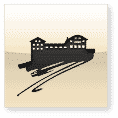Oenological: Do not drink already.
The K/I/B project, already briefly presented in Rhoneblut Newsletter No. 25, is now further advanced. Here are a few questions for Amédée Mathier.
Rhoneblood: Dear Amédée. Could you briefly explain the concept behind this project again for our readers?
Amédée Mathier: Our K/I/B project is based on the idea of vinifying the same grape variety from the same vineyard in the same cellar but in different containers. Namely, in Kvevri (amphora), in Inox (steel tank) and in barrique.
RB: Now this idea has been implemented with the Lafnetscha grape variety. This variety is probably known to very few of our readers. Can you tell us more about it?
AM: Lafnetscha is an autochthonous (local) white wine variety of the Canton of Valais. It is grown primarily in the German-speaking Upper Valais. According to a DNA analysis by José Vouillamoz, it is a spontaneous cross between Humagne blanc and Completer. The name is borrowed from the Valais German. Since the late-ripening vine almost always has to be harvested too early and the berries thus in an unripe state, the wine needs a long aging because of its acidity and astringency and therefore cannot be drunk too young. “Laff nit scha” therefore means “don’t drink already”.
RB: So now, of course, we’re looking forward to the results. How does it taste, the Lafnetscha from the Kvevri?
AM: In the kvevri always come peel, seeds and part of the stems. From these elements also come the tannins and from them the perceived acidity. In oenology, they say that these tannins must be “polished” or “optimized”. How this is done is a well-kept cellar secret, formed by experience, knowledge of grape varieties, harvest time, soil and earth. As a pioneer in Kvevri cultivation, we came up with the idea that just such a boisterous, autochthonous grape variety as Lafnetscha can find its vinificatory home in a clay vessel buried in the earth. The Lafnetscha obviously feels very comfortable undisturbed in the ground. Lafnetscha from the Kvevri: down-to-earth, round, rather heavier stuff.
RB: Probably the most commonly used container for the aging of white wine is the steel tank. There is hardly a big taste surprise to be expected, or is there?
AM: But it is. It is precisely the smooth surface of the steel and its impermeability that force the wine to deal with itself. Grape varieties with a lot of inherent flavor can develop their full potential in it. The tannins remain a bit harder and they help to emphasize the aromatics. Wines from the steel tank are a touch fresher and more aromatic in the first moment. The Lafnetscha from the steel tank: light, fresh, in summer dress.
RB: And how does the Lafnetscha like aging in barrique?
AM: Unlike the Kvevri, the Lafnetscha enters the barrique only in its purity as juice. The Lafnetscha also feels very comfortable here, but the Diva Lafnetscha is more demanding in this environment. She carefully chooses her wood in which to be placed. Only when it feels comfortable in it, it lets the tertiary aromas (toasty aromas) of the wood get to it and lolls around in the barrel until we find, now it’s off to the big world. The Lafnetscha from the barrique: a balanced blend of freshness and spicy wood notes.
RB: In what way will the findings from this first C/I/B project now be incorporated into future Lafnetscha production?
AM: Well, we are still at the beginning of the story. We know what happens to the Lafnetscha in the containers, what happens oenologically. The dress rehearsal seems to have been a success. The big question that now arises: Will he find the wine drinkers? Does the audience appreciate him?
RB: Are there already next K/I/B projects in planning, and may we know with which grape varieties they will be carried out?
AM: For the white wines, we will possibly try the Roussanne or the Marsanne. These are our original grape varieties of Kvevris. For the reds, it could be the Syrah. Until now always in combination with a second grape variety in the Kvevri, one could also fill and develop a Kvevri only with Syrah. Steel and wood already exist. You decide how to proceed. Let the Lafnetschas find and seduce you.


